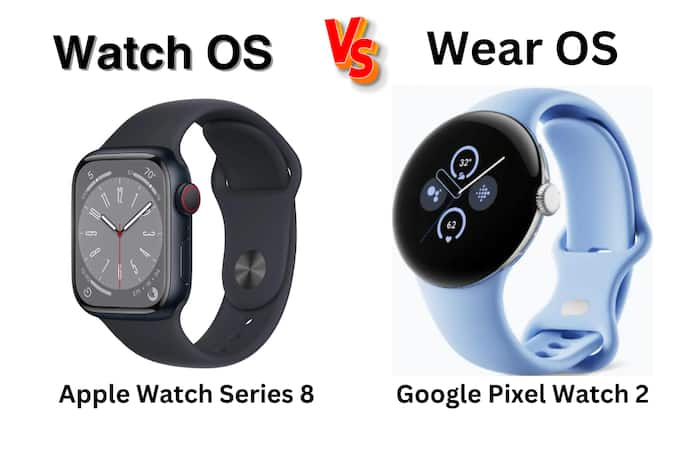
[ad_1]
Which really is the better smartwatch OS?

New Delhi: It all began when Google introduced its Wear OS in the year 2014, loaded on the Samsung Gear Live, and the LG G Watch. Apple was not far behind, when it launched its Apple WatchOS the following year, alongside its first Apple Watch. Since then, fans have been divided among which OS is better, and for those who are still unclear on which one is better for them, here is a detailed comparison of the two.
Apple Watch OS
Apple Watch OS, or watchOS, is the operating system designed for the Apple Watch. It is based on iOS, the operating system used by iPhones, and was first released on April 24, 2015, along with the Apple Watch. Over the years, Apple has updated the WatchOS, allowing users to perform various tasks on their Apple Watch, such as making phone calls, sending text messages, and reading emails. Some of the features of Watch OS include quick access to Siri, sleep tracking, SOS, emergency detection, and customisation options. Apple WatchOS is available in 45 languages, with updates being released via over-the-air (OTA) updates, which require an iPhone 5 or later running iOS 8.2 or higher and being within 33 feet of the phone.
Google WearOS
Wear OS, formerly known as Android Wear, is a version of Google’s Android operating system specifically designed for smartwatches and wearables. It was launched in 2014 and it integrates Google Assistant (now Gemini) technology and mobile notifications into a smartwatch form factor by pairing with mobile phones running Android version 6.0 “Marshmallow” or newer, or iOS version 10.0 or newer with limited support from Google’s pairing application. Wear OS supports various connectivity options like Bluetooth, NFC, Wi-Fi, 3G, and LTE, along with features such as voice control with the “OK Google” hotword, gesture-based input, and a range of applications. The platform offers customizable watch faces in round, square, and rectangular styles and is supported by hardware manufacturers like Asus, Fossil, LG, Samsung, Huawei, and others. Wear OS also provides features like notifications synchronization, voice control, Google services integration (Google Assistant, Gmail, Google Maps), third-party watch apps support, and a variety of tiles and apps for customization.
When deciding between Apple watchOS and Google Wear OS, the choice largely depends on your device compatibility, preferences for voice assistants, interface customization, and app support. But hey, feel free to consider some of the key differences listed here:
- Compatibility: Apple watchOS is exclusive to Apple Watches, requiring an iPhone for setup and optimal functionality. In contrast, Google Wear OS is compatible with a wide range of smartwatches from various manufacturers and works with both Android and iOS devices.
- Voice Assistants: Apple watchOS uses Siri, while Google Wear OS supports the Google Assistant. Both assistants offer similar functionalities, but personal preference may dictate which one you prefer.
- Interface Customization: Both operating systems allow users to customize their interfaces with different watch faces and tiles. Apple watchOS offers unique features like the Walkie-Talkie function, while Wear OS provides ample opportunities for customization through various watch faces and straps.
- App Support: Apple generally has a more extensive selection of apps designed for watchOS, but Wear OS is catching up quickly with its own library of popular smartwatch apps. Users can explore available apps on the Apple App Store and Google Play Store to see which platform offers the desired applications.
The latest Apple Watch Series 8 currently runs on WatchOS 10 and features advanced health tracking, an ECG app, fall detection, and more!
On the other hand, the Google Pixel Watch 2, is powered by WearOS 4 with a multipath health sensor, new safety features, and more.
[ad_2]